Google on Monday announced the official release of Android P — now officially dubbed Android Pie — for users of its Pixel phones.
There are plenty of new features in Android Pie, some of which you may think makes the latest flavor so appealing. Here are nine reasons you’ll want a piece of Pie.


Now playing:
Watch this:
Android P: A slice of ‘Pie’
1:19
Fresh new look and notifications
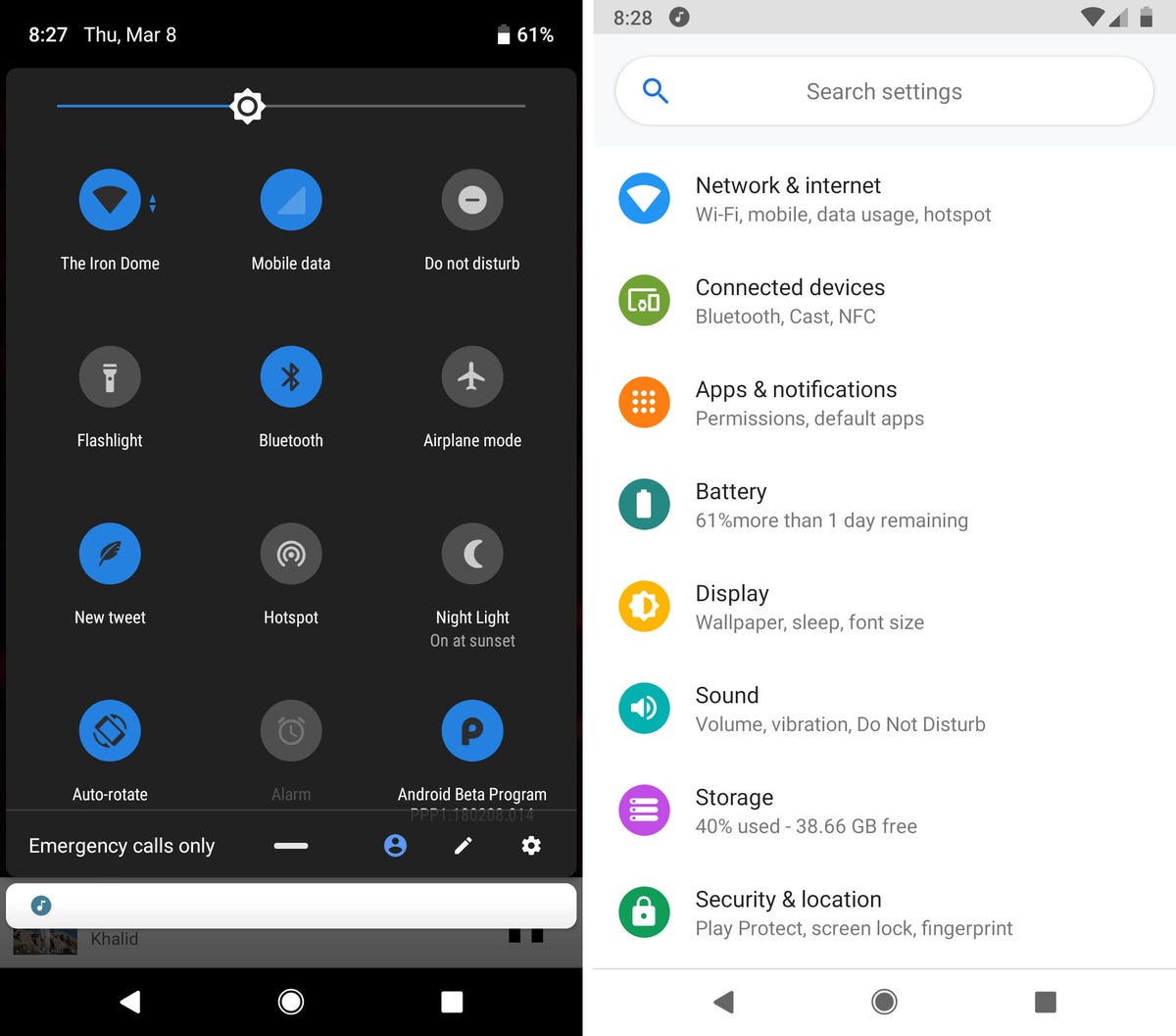

The notifications shade (left) and Settings menu (right).
Jason Cipriani/CNET
With Android Pie, Google is using rounded corners everywhere it can. A swipe down to view the notification tray and quick settings give you a good idea of where Android is heading aesthetically. There’s also a lot more color in the Settings menu.
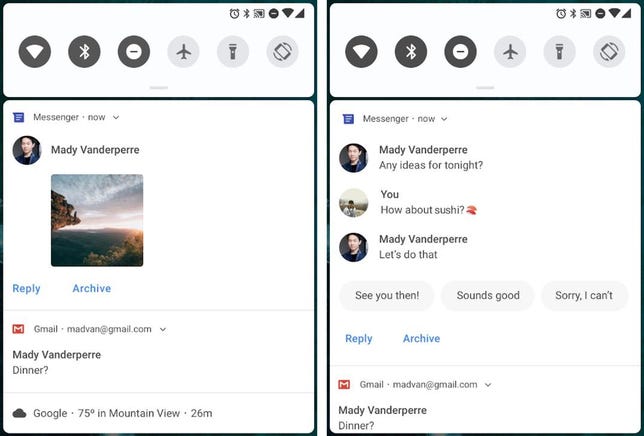
 Enlarge Image
Enlarge ImageSmart replies in notifications are coming soon.
As for notifications, Android already leads the way in its handling of notifications when compared with iOS. With Android Pie, it widens that gap by adding more features in its notifications shade. Messaging apps, in particular, will suggest smart replies and show more information in each notification.
You also can’t expand the Wi-Fi or Bluetooth settings from the shade like you can in Oreo.
Official dark mode
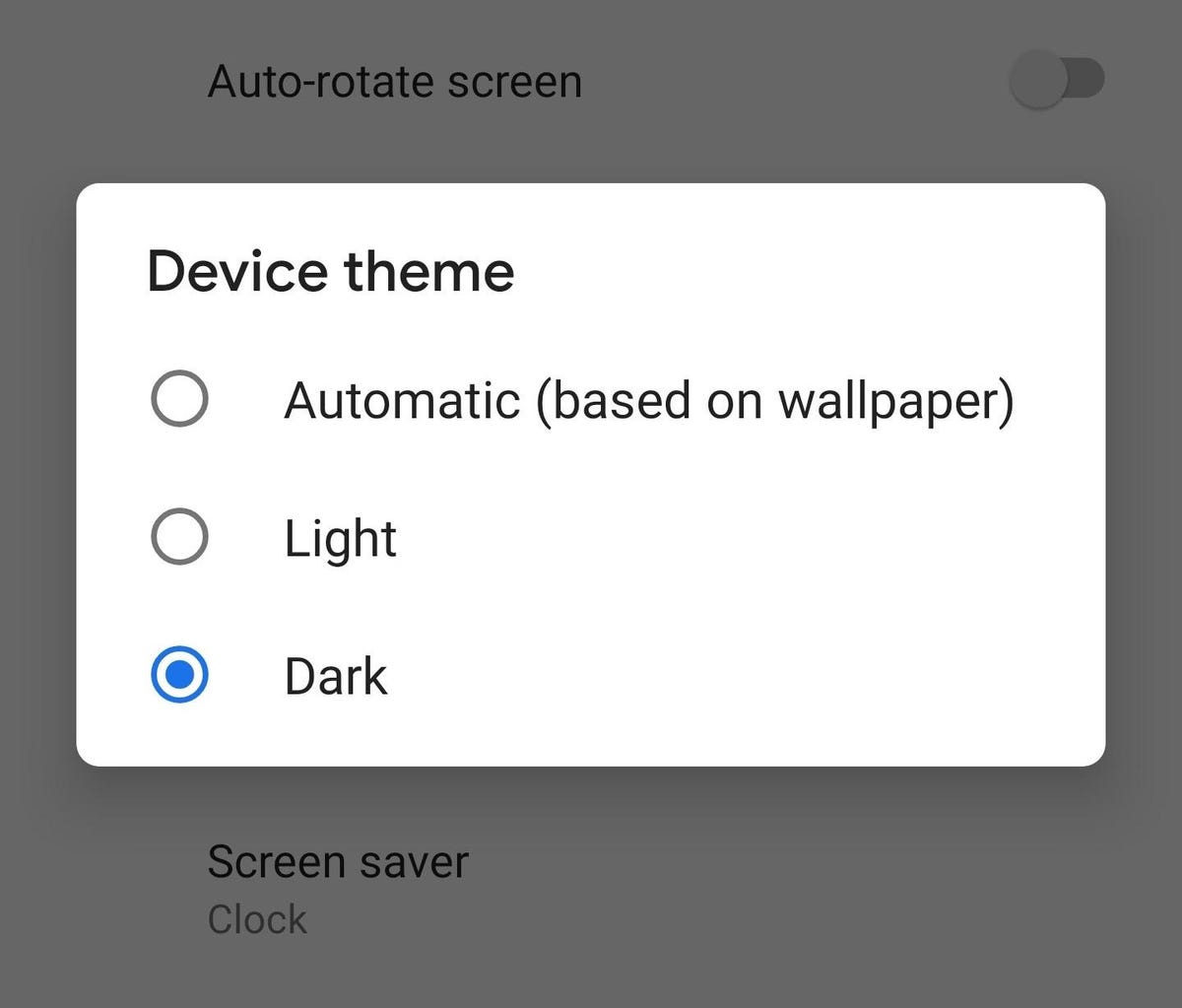

Screenshot by Jason Cipriani/CNET
Google has added an official dark mode option in the Settings app. Instead of relying on the wallpaper in order to trigger the dark mode, as had been the case up until this point, users can now decide whether to always use dark mode, light mode, or let the phone decide for itself. An official dark mode is something Android (and for that matter, iOS) users have been asking for for years. Thanks, Google.
No stopping the notch
As bezels get smaller, some Android phones are adopting a notch at the top of the screen to accommodate sensors, like on the iPhone X. The Essential Phone, the Huawei P20
and the Asus ZenFone 5 all have one, as does the excellent OnePlus 6.
Anticipating this change, Android Pie gives you a preview of what this might look like after you enable Developer Mode. Scroll down to the Drawing section under developer options, tap “Simulate a display with a cutout,” then choose a size. Voila — you’re living the notched life.
Useful screenshot tools
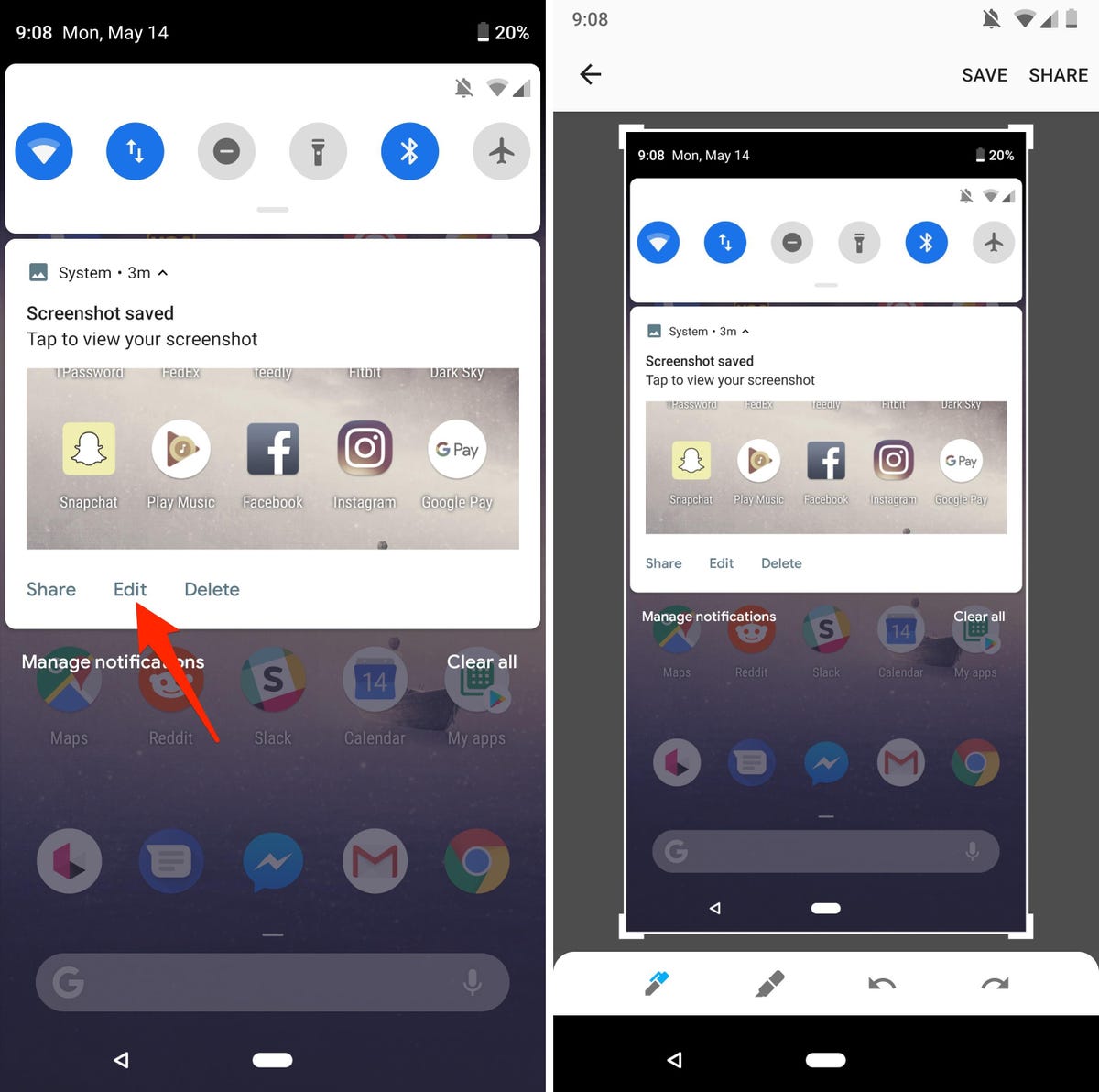

Screenshots by Jason Cipriani/CNET
Taking a screenshot is now as simple as pressing and holding the power button, then tap Screenshot. The old method of holding the power and volume-down in at the same time still works, of course.
In addition to the new screenshot shortcut, Android Pie gains a new edit feature. As soon as your screenshot is saved, the preview notification will display an Edit button. Selecting Edit will open a markup tool for you to draw, crop, or highlight the screenshot before sharing it.
Dashboard
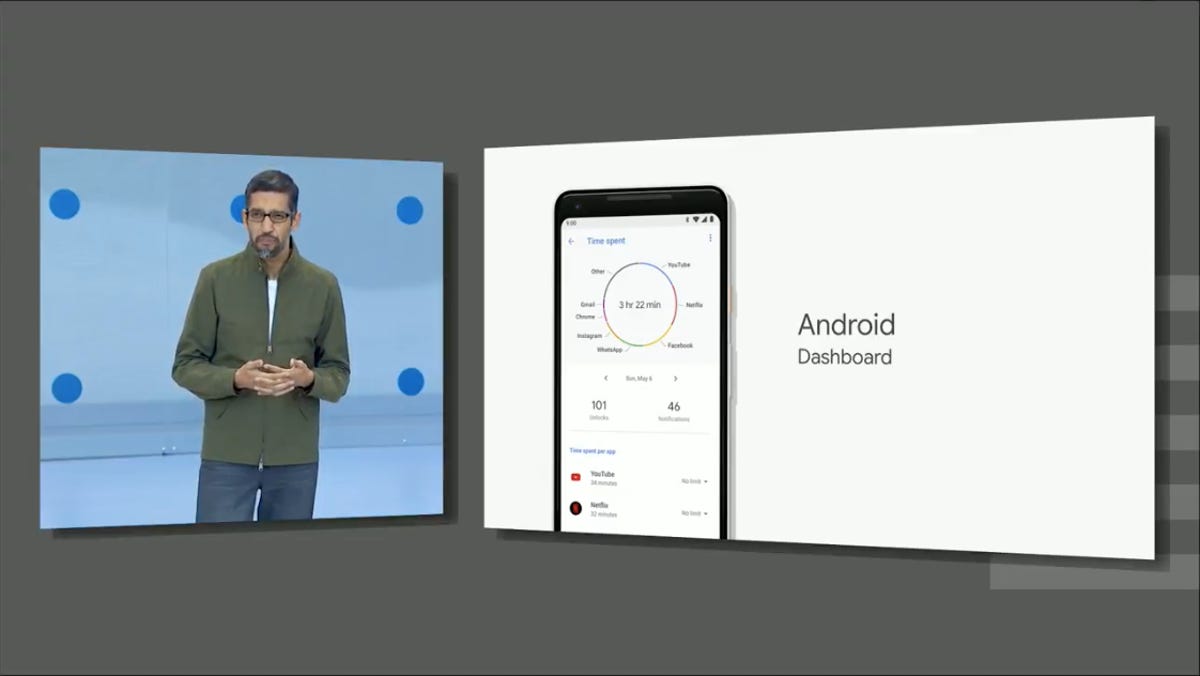

Google/Screenshot by CNET
Google’s plan to curb phone addiction is through its Wellbeing program. The program still isn’t quite ready for broad rollout, but interested Pixel owners can sign up to take part in the Digital Wellbeing beta. You’ll need to have a Pixel device running Android 9.0 Pie in order to take part.
Lockdown mode for extra security
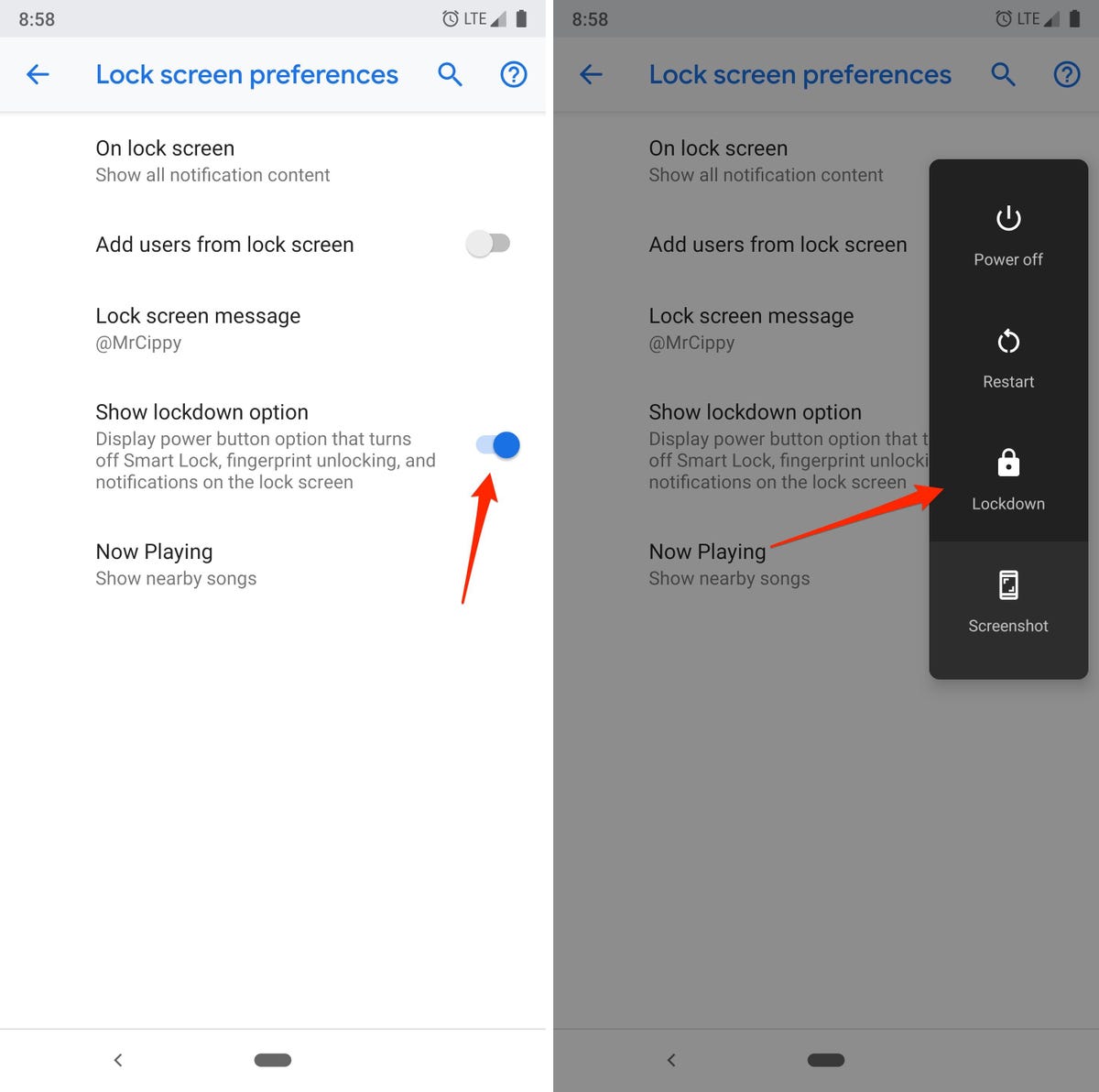

Screenshot by Jason Cipriani/CNET
Google is doing much to improve the overall security of your information in Android Pie, but most of that is done under the hood. There is a new feature, though, that locks down your device with the push of a button. When enabled, it lets you disable the fingerprint sensor or trusted voice unlock (reverting to your backup unlock methods such as a PIN or pattern).
Go to Settings > Security and Location > Lock Screen Preferences and toggle the Show lockdown option. After you toggle that on, you can now just press the power button, then tap Lockdown.
Gesture navigation
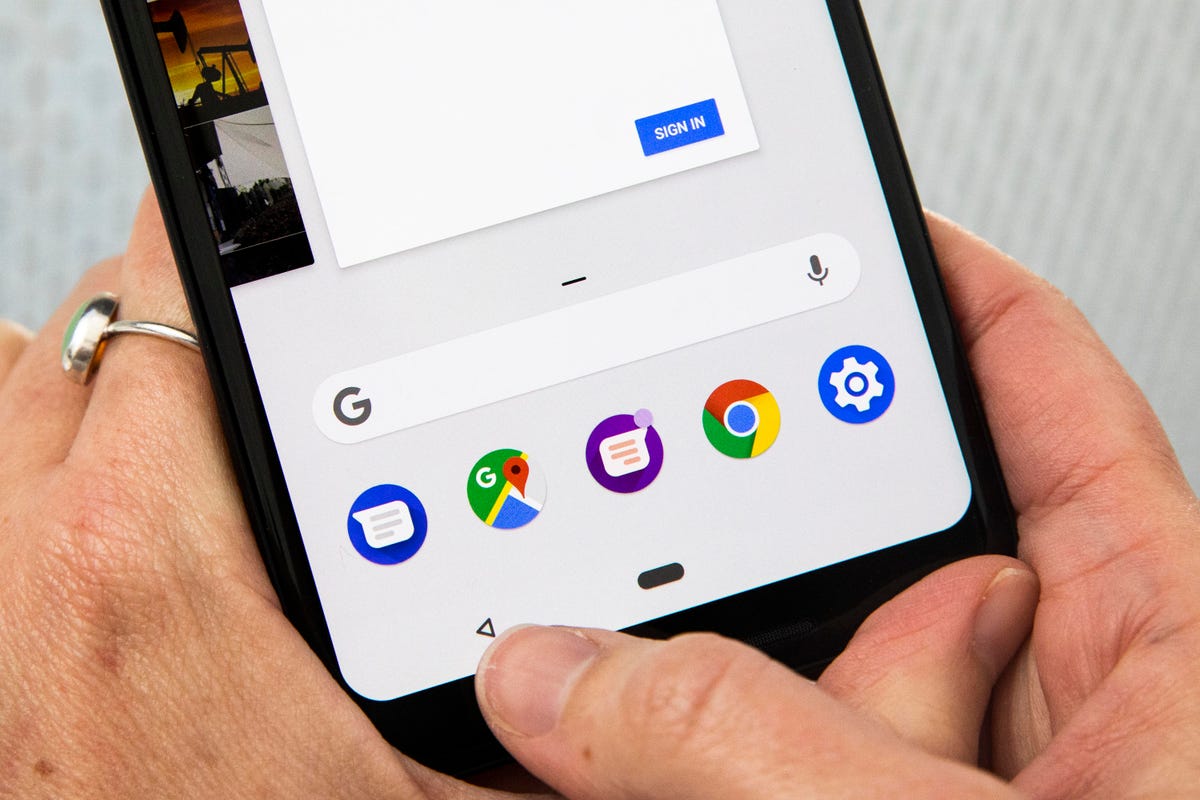

With Android Pie, you now have the option to ditch Android’s traditional three-button navigation and go with gestures instead. A single home button, actually it looks more like a pill, is your thumb’s home base. Tap on the button to go home, swipe right to go back, swipe left to switch between recent apps, or swipe up to view recent apps or your app drawer. Enable gesture navigation and learn about more settings in Android Pie in this post.
Rotate only when you want
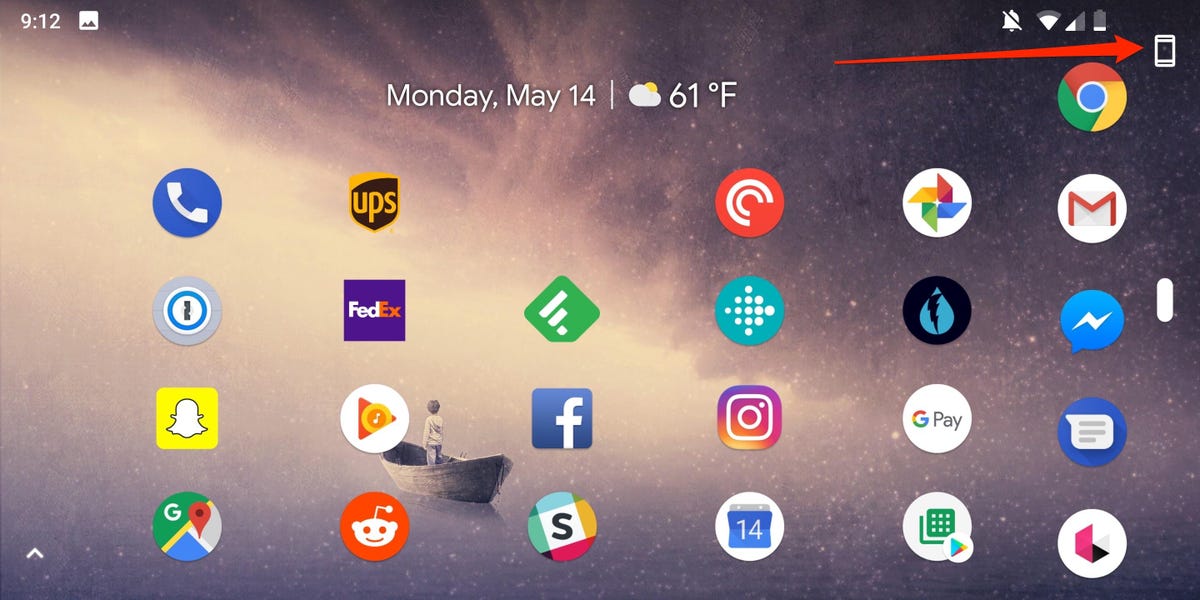

The rotation icon on the bottom right keeps the landscape orientation locked.
Lynn La/CNET
Instead of just locking down vertical or portrait mode on your phone, Android Pie will display a button to force the screen rotation if it detects your phone has changed orientation.
When you turn the screen to landscape, tap the icon that appears at the bottom to change the orientation. Now when you turn it back to portrait it will stay in landscape unless you tap on the same button again to rotate back.
Battery status on the ambient display
If you have a Google Pixel ($695 at Amazon), you’ll now see the battery percentage at the bottom of the ambient display. This is nothing new, and that feature is already on some Samsung, Motorola, LG and OnePlus phones. Still, it’s handy to have the extra info at a quick glance.
Read more: Google’s Android Pie is all about notches and notifications
Read next: How to install Android Pie right now



